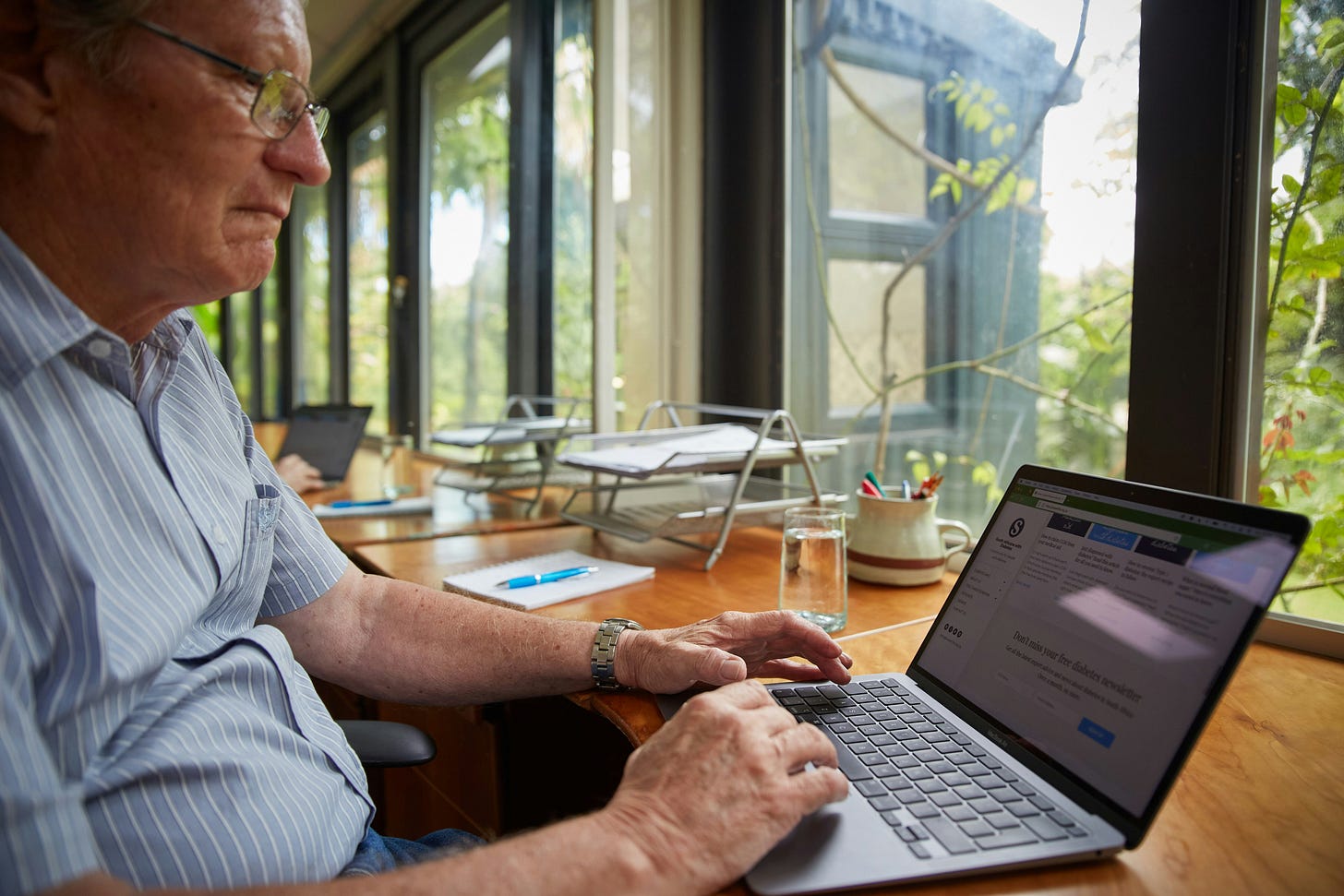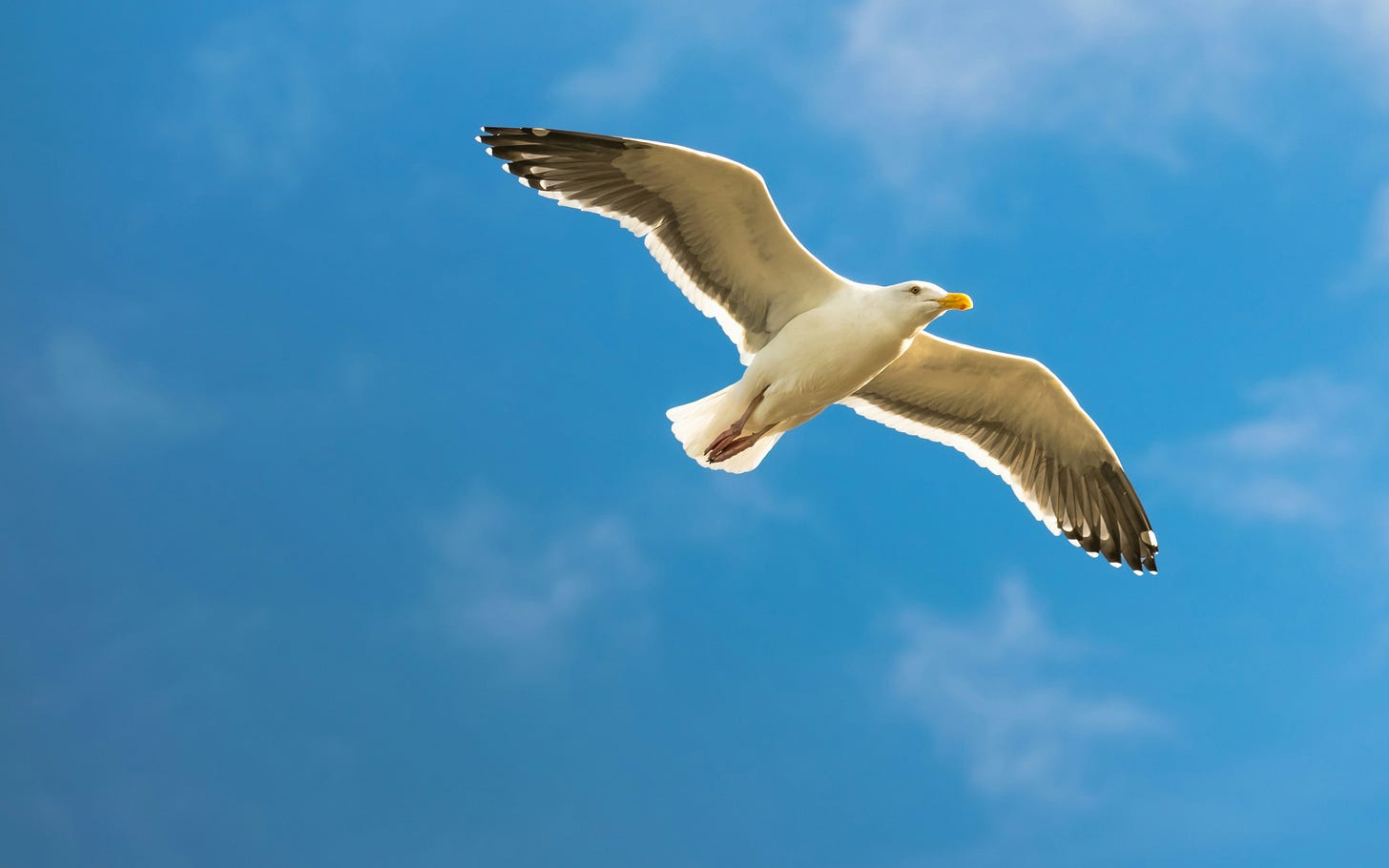Thursday Things is here! This week we shoot women into space and keep our brains healthy by downloading updates.
If you enjoy this edition, please click the heart icon in the header or at the end of the post to let me know.
Space is the place. Photo by ActionVance on Unsplash
Keep on clicking
Senior citizens get stereotyped as fumbling bumblers when it comes to using technology. And in some cases that reputation may be accurate. It is probably true for many people that at some point in life they just can’t absorb learning how to use a new technology, be it computers, email, mobile apps, or AI.
But new research suggests there is benefit in keeping up with the technical times:
Technology use by older adults linked to reduced dementia risk
As the first generation that interacted with digital technology reaches an age where dementia risks emerge, scientists have asked the question: Is there a correlation between digital technology use and an increased risk of dementia? With the phrases "brain rot" and "brain drain" circulating on social media, it would appear that most people would assume the answer is yes.
We joke about scrolling the internet rotting our brains, true. But plot twist!
However, a new study in Nature Human Behavior by neuroscientists at Baylor University and the University of Texas at Austin Dell Medical School reveals the opposite—digital technologies are actually associated with reduced cognitive decline.
… The "digital dementia" hypothesis predicts that a lifetime of exposure to digital technology will worsen cognitive abilities. On the contrary, the study's findings challenge this hypothesis, indicating instead that engagement with digital technology fosters cognitive resilience in these adults.
In fact, their study revealed that digital technology use correlates with a 58% lower risk of cognitive impairment.
That’s a big number! So what explains this apparent benefit of engaging with technology?
Irony alert! It’s the fact that our computers and phones and apps cause us so much frustration:
However, for the current generation of older adults who were introduced to the first technological advancements—computers, the internet and smartphones—past their childhood, using technology is cognitively challenging because it is ever-changing.
"One of the first things that middle-age and older adults were saying is that 'I'm so frustrated by this computer. This is hard to learn.' That's actually a reflection of the cognitive challenge, which may be beneficial for the brain even if it doesn't feel great in the moment." Scullin said.
Technology requires constant adaptation, he said, such as understanding new software updates, troubleshooting internet loss or filtering out website ads.
"If you're doing that for years and you're really engaging with it, even though you might experience frustration, that may be a sign of you exercising your brain," he said.
So the next time your computer crashes or you lose a file or you can’t figure out how to turn off Albanian subtitles on your TV, just remember that solving this problem is helping your brain stay agile.
Another benefit is that technology enables social connection that might otherwise be absent, and that too is good for aging brains:
Technology also enables communication and engagement like never before, which can expand opportunities for connectivity. Video calls, emails and messaging apps help maintain social networks, especially for people who would not otherwise regularly see their family members.
So there you have it. Keep on clicking!
Take that, cognitive decline! Photo by Sweet Life on Unsplash
First all female space mission
There was a lot of media attention to — and subsequent mockery of — this week’s “historic” all female space flight involving singer Katy Perry, morning show TV host Gayle King, Jeff Bezos’s fiancé Lauren Sanchez, and a few other passengers taking a brief ride to the edge of space on Jeff Bezos’s Blue Origin rocket.
I’m not a critic of space tourism — I’m all for it. Nor do I give much credence to the critique that rocket rides can only be afforded by the very rich. Yes, it takes a $150,000 deposit to reserve a Blue Origin ride, with the full ticket price unclear, but presumably in the millions. Unless you get a celebrity invite, of course. So right now, yes, you pretty much have to be rich or know the owner to take a ride into space.
But that has been the case with every new technology ever — electricity, automobiles, air travel, telephones, phonographs, televisions, computers, mobile phones, and on and on. All of these were luxuries only affordable by the rich when first introduced. Only later did improvements in the technology and the infrastructure to deliver it, along with economies of scale, make these advances commonly available.
Think about how much better and cheaper televisions and computers are now compared to a few decades ago. A $300 laptop today, or a $300 TV, exceeds the capabilities of any computer or TV available for ten or a hundred times as much in, say 1980 or 1990. New stuff costs more at first and is only a toy of the rich. Eventually, if it works, it will reach the mass market. But by then we’ll all be complaining about the newer new thing that only rich people can afford. We call this progress.
But getting back to space — I’m fine with letting the millionaires and billionaires be the ones getting launched into space on relatively untested rockets if that’s what they want to do. Or going down to see the Titanic, if that’s how you want to spend your money (and risk your life).
The silly hype around this week’s celebrity spaceflight1 got me wondering if this really was the first all female trip to space. Turns out it wasn’t:
Valentina Tereshkova: First woman in space
Valentina Tereshkova became the first woman to travel to space on June 16, 1963, when she orbited Earth as part of the Vostok 6 mission.
Tereshkova spent almost three days in space during her solo mission.
She remains the youngest woman to fly to space, the only female astronaut or cosmonaut to make a solo space journey, and the first civilian to journey to space.
Valentina, who worked in a textile factory and whose father died fighting in World War II, beat out 400 applicants to be one of five women selected to join the Soviet cosmonaut corps and underwent lengthy training before being selected for the Vostok 6 mission. She was the first cosmonaut not to have a background as a test pilot.
She initially came to the space program’s attention because of her parachuting skills:
Tereshkova's life changed course when she was 22 and made her first parachute jump with a local aviation club, the Yaroslavl Air Sports Club. She would go on to make over 150 jumps, according to the Smithsonian Air and Space Museum.
Those parachuting skills came in very handy, because back then, cosmonauts had to eject from the returning capsule at 20,000 feet before it hit the ground!
Vostok 6 lifted off from Tyuratam Launch Center (now Baikanor Cosmodrome), Kazakhstan on June 16, 1963. It remained in space for nearly three days and orbited the Earth 48 times, giving Tereshkova more time in space than all of the American Mercury astronauts combined. Vostok 6 reentered the Earth’s atmosphere on June 19, and Tereshkova parachuted to the ground, as all early cosmonauts had to do. She became a worldwide celebrity, as the first woman in space, and the first woman in orbit.
Her callsign was “Chaika,” Russian for “seagull.” She was 26.
Valentina Tereshkova remains the only female astronaut or cosmonaut to make a solo space journey. She is no longer the youngest woman to go to space, technically speaking, but I believe remains the youngest woman to orbit the planet. Today, age 88, she is a member of the Russian State Duma.
Chaika-1 to base. Photo by Anurag Jain on Unsplash
This week’s edition is brought to you by Dan’s Advice: Take control of your digital life.
Thank you for reading!
Please click the hearts, leave a comment, and use the share feature to send this issue to a friend who might enjoy it. See you next Thursday!
Most media attention went to Katy Perry, Lauren Sanchez, and Gayle King. The truly impressive passenger on this flight was Amanda Nguyen:
Having just flown beyond the Kármán line — recognized as the division between Earth and the rest of the universe — she'd just become the first Vietnamese woman to fly to space. She'd also just closed the loop on a dream she paused for 10 years to advocate for civil rights, keeping a promise to her younger self that she would "return to her."
Before that 10-year pause, Nguyễn was a student at Harvard University in pursuit of a career at either NASA or the CIA. She'd been studying astrophysics at the college, had worked on NASA's last space shuttle mission and had previously helped the agency develop its Kepler exoplanet-hunting space telescope. Then, in 2013, during her senior year, she was raped at a frat party.
While dealing with her own emotions in the aftermath of her sexual assault, Nguyễn also began to uncover serious lapses in the justice system designed to support survivors so they can press charges. She eventually found herself at a crossroads between pivoting her journey toward the fight for sexual assault survivor rights — harnessing her own experience as a powerful medium of advocacy — or continuing on the path toward her scientific dreams. She chose the former, and indeed achieved great things.
She is credited, for instance, with the passing of the Sexual Assault Survivors' Bill of Rights Act, which entitles survivors to free medical exams, mandates that forensic evidence be kept for at least the statute of limitations on rape, and provides the option of extending that timeline in certain circumstances. Because of this accomplishment, she was also a nominee for the Nobel Peace Prize in 2019.
She earned that flight.






